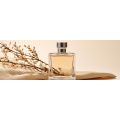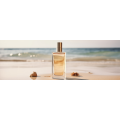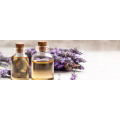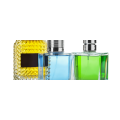Perfumes come in various types, primarily differentiated by their concentration levels and the intensity and longevity of their scent. The most common types include Eau de Parfum (EDP), Eau de Toilette (EDT), and others like Eau de Cologne (EDC) and Parfum (also known as Extrait de Parfum). Each type offers a unique experience due to the varying levels of fragrance oil concentration, which directly affects their smell strength, lasting power, and, often, the price.
Parfum (Extrait de Parfum)
Parfum is the most concentrated form of fragrance, typically containing 20% to 40% perfume oil. This high concentration makes it the most potent and long-lasting type, with the scent persisting for up to 8 hours or more. Due to its strength and durability, Parfum is often the most expensive option. Its rich, deep scent is suitable for special occasions or evening wear.
Eau de Parfum (EDP)
Eau de Parfum strikes a balance between intensity and subtlety, containing 15% to 20% perfume oil concentration. It's less intense than Parfum but still offers a strong, enduring fragrance, usually lasting about 4 to 5 hours. EDP is a popular choice for everyday wear, providing a noticeable yet not overpowering scent.
Eau de Toilette (EDT)
Eau de Toilette is lighter than EDP, with a perfume oil concentration of 5% to 15%. Its fresher, more delicate fragrance lasts approximately 3 to 4 hours. EDT is perfect for daytime wear, offering a pleasant scent that's noticeable without being overwhelming. It's also typically more affordable than EDP and Parfum, making it a popular choice for regular use.
Eau de Cologne (EDC)
Eau de Cologne has an even lower concentration of perfume oils, usually between 2% to 4%. Originally intended for a refreshing burst of citrus fragrance, modern colognes can feature a variety of scent profiles. The light, airy fragrance of EDC is fleeting, typically lasting around 2 hours. It's ideal for a quick refresh or a subtle hint of scent.
Conclusion
The choice between EDP, EDT, and other types of perfume depends on personal preference, the occasion, and the desired longevity of the fragrance. Higher concentration levels offer a stronger and longer-lasting scent but at a higher price. In contrast, lower concentrations are more affordable and suitable for casual or daytime wear due to their lighter, more transient nature. Understanding these differences can help individuals select a perfume that best matches their needs and preferences.

















